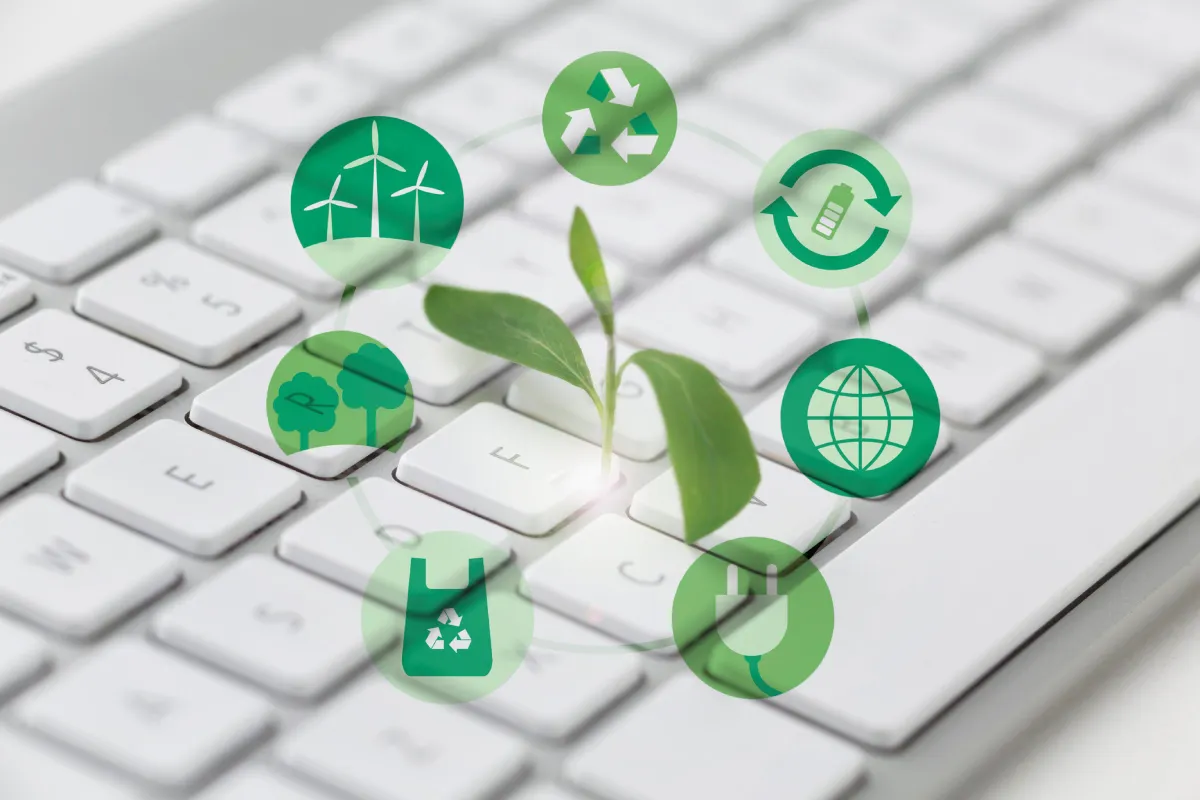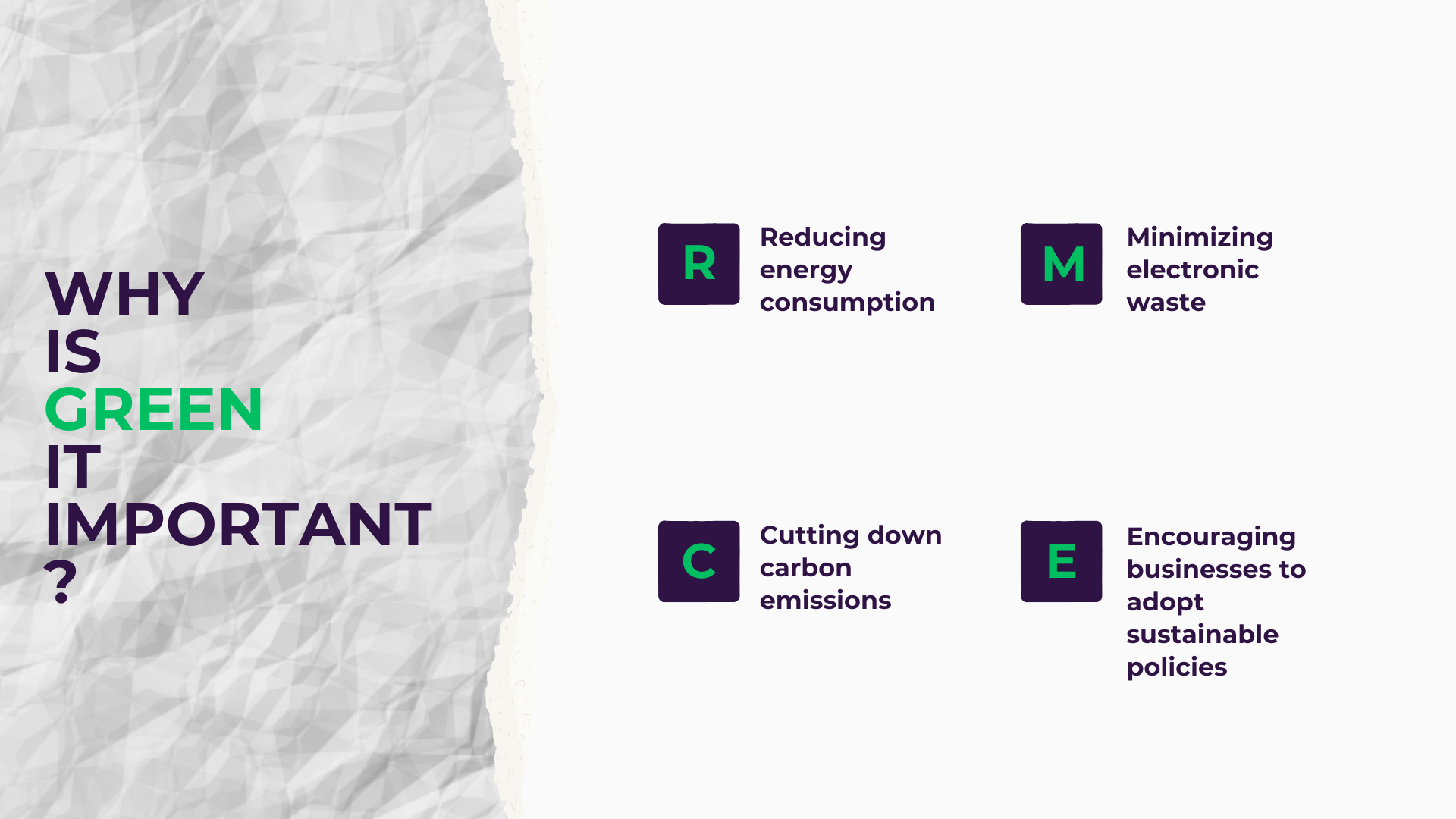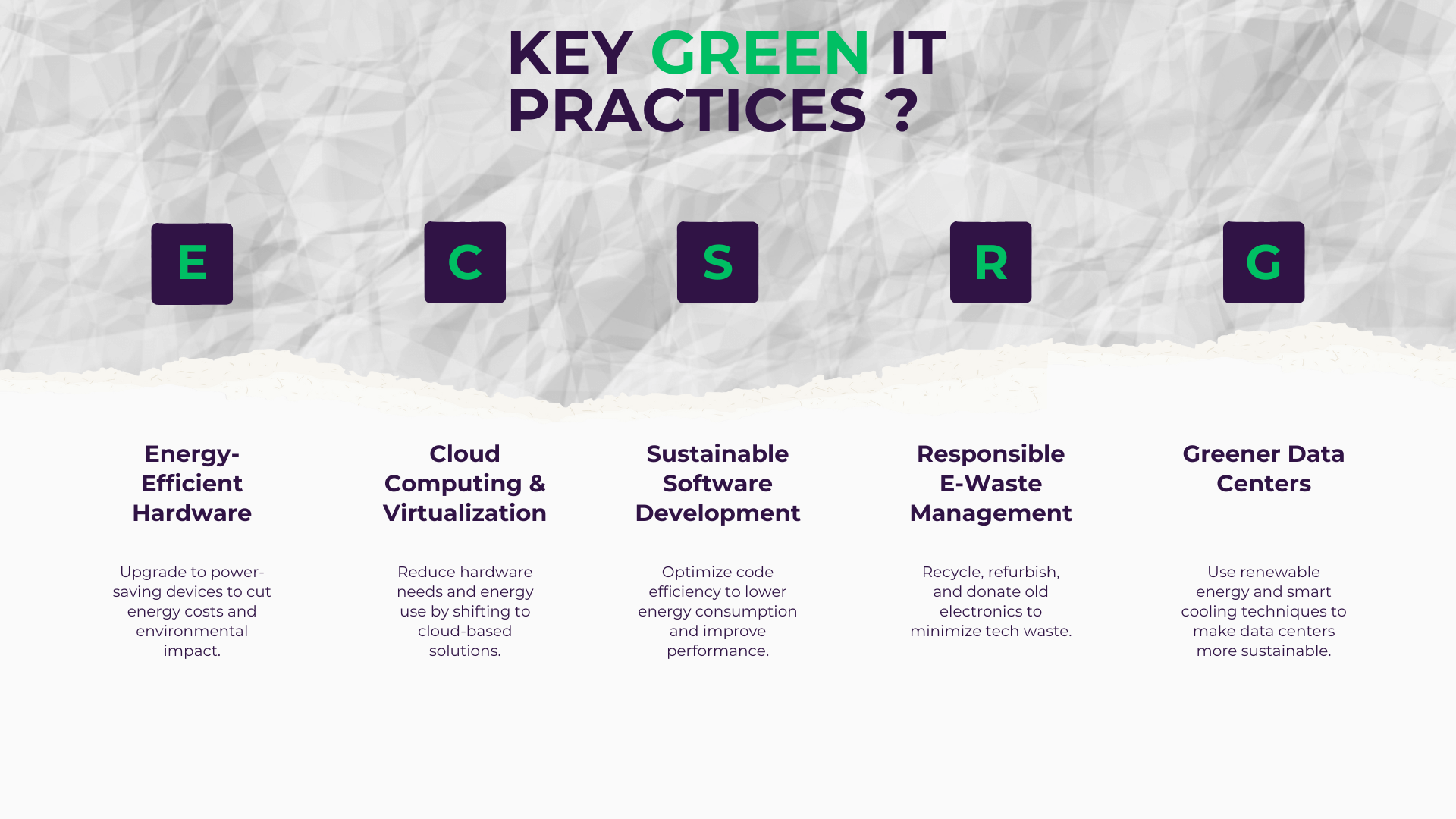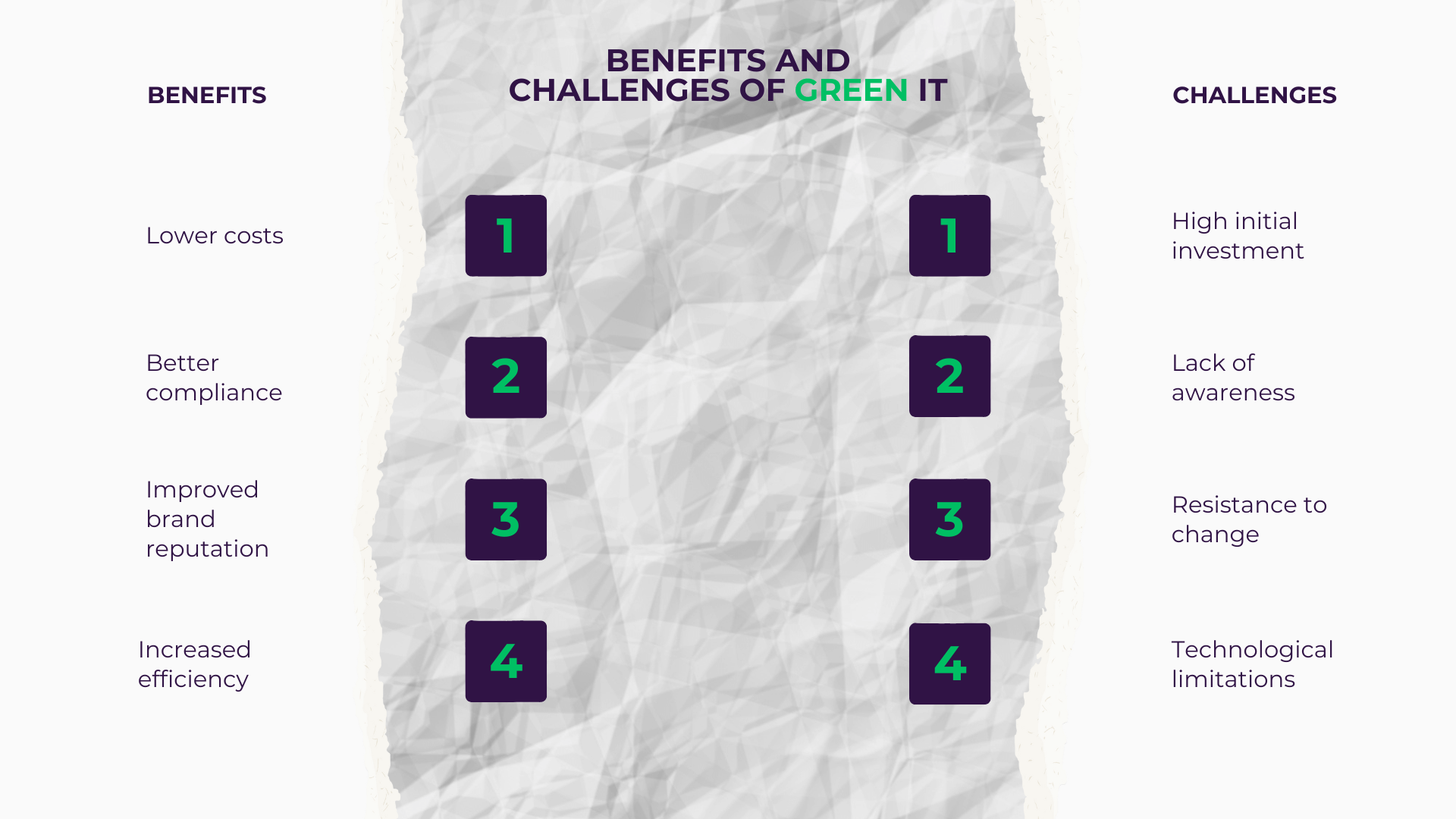Green IT: Sustainable Practices in Information Technology
Author: Ankit Jain ( https://www.thepdffox.com/ )
Table of Contents
- The Urgent Need for Green IT
- What is Green IT?
- Why is Green IT Important?
- Key Green IT Practices
- Benefits of Green IT
- Challenges in Implementing Green IT
- How Businesses Can Get Started
- The Future of IT is Green
The Urgent Need for Green IT
Modern technology and its effects on the environment are changing quickly. The information technology sector contributes significantly to global carbon emissions, from energy-intensive data centers to electronic garbage accumulating in landfills. Green IT, a trend toward more environmentally friendly and sustainable IT solutions, can help with this.
Responsible IT practices are becoming more and more crucial as companies continue to use digital technologies. In addition to promoting environmental sustainability, businesses that use green IT also increase productivity and cut expenses. The idea of “green IT,” its importance, important sustainable practices, and how companies might incorporate these efforts into their operations will all be covered in this article.
What is Green IT?
Green IT, sometimes referred to as sustainable IT, is the process of developing, producing, utilizing, and discarding technology in an ecologically conscious manner. In all facets of computers, it emphasizes cutting waste, conserving energy, and encouraging sustainable practices. The idea ensures that technological advancements do not come at the expense of the environment by including both software and hardware.
Greener data centers, ethical e-waste disposal, and energy-efficient hardware and software development are all examples of sustainable IT solutions. Businesses can retain or even improve their technological capabilities while reducing their carbon footprint by putting these ideas into effect.
Why is Green IT Important?
IT infrastructure has a greater carbon footprint than ever before due to our growing reliance on technology. Electronic trash is one of the waste streams with the greatest rate of growth in the world, and data centers alone use about 1% of the world’s electricity. Green IT addresses these problems by:
- Reducing energy consumption—Using energy-efficient devices and systems helps lower electricity use and overall energy demand.
- Minimizing electronic waste—proper disposal and recycling of obsolete electronic equipment—prevents harmful materials from ending up in landfills.
- Cutting down carbon emissions—Using renewable energy sources and optimizing software and hardware efficiency contribute to lower CO2 emissions.
- Encouraging businesses to adopt sustainable policies—Promoting environmentally friendly IT practices within organizations creates a culture of sustainability.
By adopting Green IT initiatives, businesses and individuals can contribute to a healthier planet while also reaping financial and operational benefits.
Key Green IT Practices
1. Energy-Efficient Hardware
Switching to energy-efficient devices can make a significant difference. Modern laptops, monitors, and servers are designed to consume less power. Look for Energy Star-certified products or devices with low-power processors.
In addition to purchasing energy-efficient hardware, businesses can optimize existing devices by:
- Enabling power-saving features on computers and servers.
- Using LED monitors instead of traditional LCDs.
- Encouraging employees to turn off equipment when not in use.
2. Cloud Computing & Virtualization
Rather than running multiple physical servers, companies can use cloud computing and virtualization to consolidate workloads. This reduces the number of physical machines needed, lowering both energy consumption and cooling costs.
Cloud computing services allow businesses to utilize shared data centers, which are optimized for energy efficiency. Additionally, virtualization enables multiple operating systems to run on a single server, reducing hardware needs and power consumption.
3. Sustainable Software Development
Green IT isn’t just about hardware—software plays a crucial role as well. Well-optimized code runs more efficiently, requiring less processing power and energy. Developers can contribute to sustainability by:
- Writing cleaner, more efficient code to reduce resource usage.
- Designing applications that require fewer system resources.
- Using cloud-based collaboration tools to minimize paper-based processes.
4. Responsible E-Waste Management
Electronic waste is one of the fastest-growing pollution problems. Companies should:
- Recycle old electronics responsibly— Partnering with certified e-waste recycling programs ensures proper disposal.
- Donate outdated but functional devices—many schools and non-profits can benefit from refurbished electronics.
- Implement take-back programs—Encouraging customers to return old products for recycling can help reduce waste.
5. Greener Data Centers
Data centers are power-hungry, but many companies are making them greener by:
- Using renewable energy sources—solar and wind power—can help reduce dependence on fossil fuels.
- Implementing efficient cooling techniques—liquid cooling and free-air cooling—reduces energy usage.
- Optimizing server utilization—proper load balancing and server virtualization minimize wasted resources.
Benefits of Green IT
Going green isn’t just good for the planet—it’s good for business too! Companies that adopt Green IT practices enjoy:
- Lower costs—reduced energy bills and hardware expenses.
- Better compliance—meeting sustainability regulations and corporate social responsibility goals.
- Improved brand reputation—Customers prefer eco-friendly companies and are more likely to support sustainable businesses.
- Increased efficiency—optimized resource utilization leads to better performance and cost savings.
Challenges in Implementing Green IT
Despite its benefits, Green IT comes with challenges:
- High initial investment—Upgrading to energy-efficient tech and implementing sustainable solutions can be costly.
- Lack of awareness—Many businesses are unaware of the long-term benefits of Green IT.
- Resistance to change—Companies may be hesitant to alter existing systems or invest in new technologies.
- Technological limitations—Some industries may require high-performance computing that is difficult to make fully sustainable.
How Businesses Can Get Started
Getting started with Green IT doesn’t have to be overwhelming. Here are some simple steps:
- Conduct an IT energy audit—identify areas of high consumption and inefficiency.
- Switch to cloud-based services—reduce hardware dependency and energy consumption.
- Implement a device recycling program—encourage responsible disposal and refurbishment of old technology.
- Train employees on energy-saving practices— Small actions, like turning off unused devices and optimizing printer use, add up over time.
- Invest in renewable energy sources—If possible, transition to solar, wind, or other renewable energy options for powering IT infrastructure.
The Future of IT is Green
Green IT is a requirement, not just a fad. To lessen our impact on the environment, both individuals and corporations must adopt sustainable technological practices. Every little move matters, whether it’s moving to cloud computing, discarding outdated electronics, or optimizing software.
Businesses that act now will save money, increase productivity, and improve their reputation in addition to helping to create a healthier planet. Green IT is the way of the future, and it’s time for everyone to help make that a reality.
Author: Ankit Jain ( https://www.thepdffox.com/ )






Leave a Reply